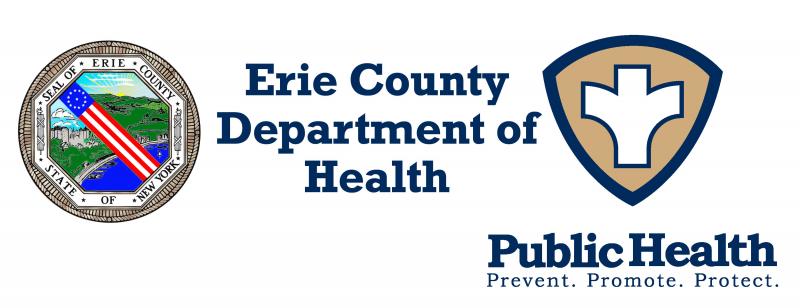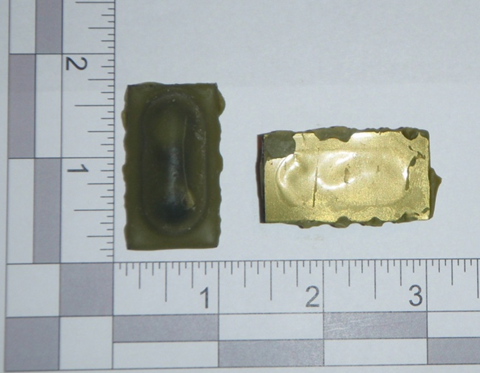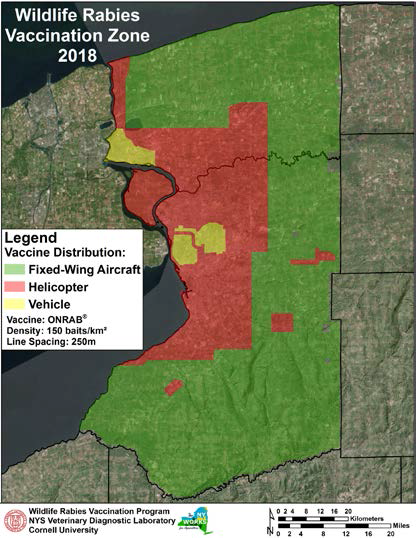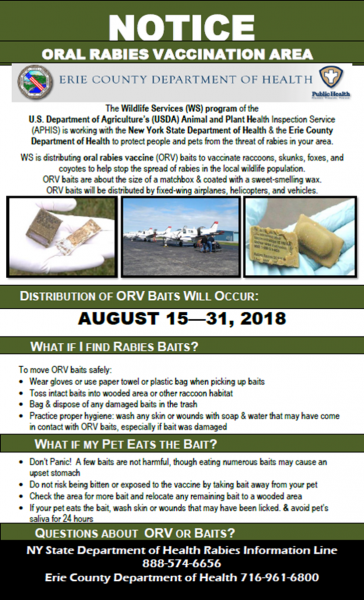Modified: August 3, 2018 12:03pm
Latest News

PRESS RELEASE
From the Office of the Commissioner of Health, Dr. Gale R. Burstein
Date August 3, 2018
CONTACT: Mary C. St. Mary/Mary.StMary@Erie.Gov
Phone: 716.858.4941/ Mobile: 716.253.3925
Rabies Vaccine Airdrop Begins Mid-August
Program’s Goal is to Reduce Incidence of Rabies in Local Wildlife Population
ERIE COUNTY, NY— In collaboration with Cornell University’s Animal Health Diagnostic Center, the New York State Department of Health and the United States Department of Agriculture’s Animal and Plant Health Inspection Service (“USDA/APHIS”) Wildlife Services, the Erie County Department of Health (“ECDOH”) is once again participating in a wildlife baiting rabies vaccination initiative.
From approximately August 15—31, 2018, an estimated 406,800 rabies vaccine baits will be distributed in both Erie and Niagara counties.

In Erie County, rural areas will have bait distributed over a 2-3 day time span, weather permitting, by 5 fixed-wing aircraft. Helicopters will then distribute bait in suburban towns/villages and in open areas of the City of Buffalo, starting around August 23rd.
To distribute bait in more highly populated areas, the ECDOH’s Division of Environmental Health’s Rabies, Disease and Vector Control Program staff will distribute baits by hand, travelling by vehicle. The geographic area to be covered is shown to the left. It is expected that the entire baiting effort should
conclud e by August 31st, weather permitting.
e by August 31st, weather permitting.
“The distribution of vaccine-laden baits by airplane and helicopter throughout Western New York is done annually as an important part of an aggressive action to halt the spread of rabies in wildlife, particularly raccoons,” said Peter Tripi, Senior Public Health Sanitarian. “Vaccinating wildlife against rabies is a highly effective way to decrease the risk of human exposure to rabies by coming in contact with rabid wildlife. Coordinated efforts such as this are essential to protect Erie County residents and their pets from contact with potentially rabid wildlife.”
“Rabies remains a very serious disease as it is nearly always fatal once symptoms are evident,” said Dr. Gale R. Burstein, Erie County Commissioner of Health. “Be on the lookout for our team from the ECDOH Rabies, Disease and Vector Control program distributing bait by hand in certain areas. Our goal is to decrease Erie County residents’ risk of contact with a rabid wild animal. This effective oral rabies vaccine will help decrease rabies in our raccoon populations.”
Do NOT disturb baits. Most baits are eaten within four days; almost all baits will be gone within a week. If baits are not found and eaten, they will harmlessly dissolve and exposed vaccine will become inactivated. If you must move bait, wear gloves or use a plastic bag or paper towel to pick it up. Place any damaged baits in the trash; throw intact baits into a wooded area or other raccoon habitat.

Residents should WASH HANDS IMMEDIATELY if they come into direct contact with the vaccine or bait, then call the New York State Department of Health Rabies Information Line at 1-888-574-6656.
Additional recommendations include:
• Supervise children’s outdoor activities during and for one week following bait distribution
• Confine dogs and cats indoors and observe leash laws during the bait distribution interval and for one week afterward.
- This will increase the probability of raccoon vaccination and decrease the chance of pets finding the baits
• Baits and vaccines are not harmful to domestic animals. However, an animal may vomit if it consumes several baits.
- Residents should not risk being bitten while trying to remove bait from your pet’s mouth.
# # #
For More Information:
Erie County Department of Health

